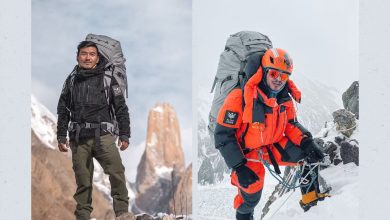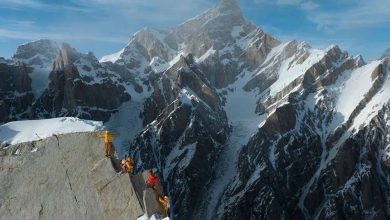Annapurna vs K2: Location, History, Routes, Difficulty – Comparison
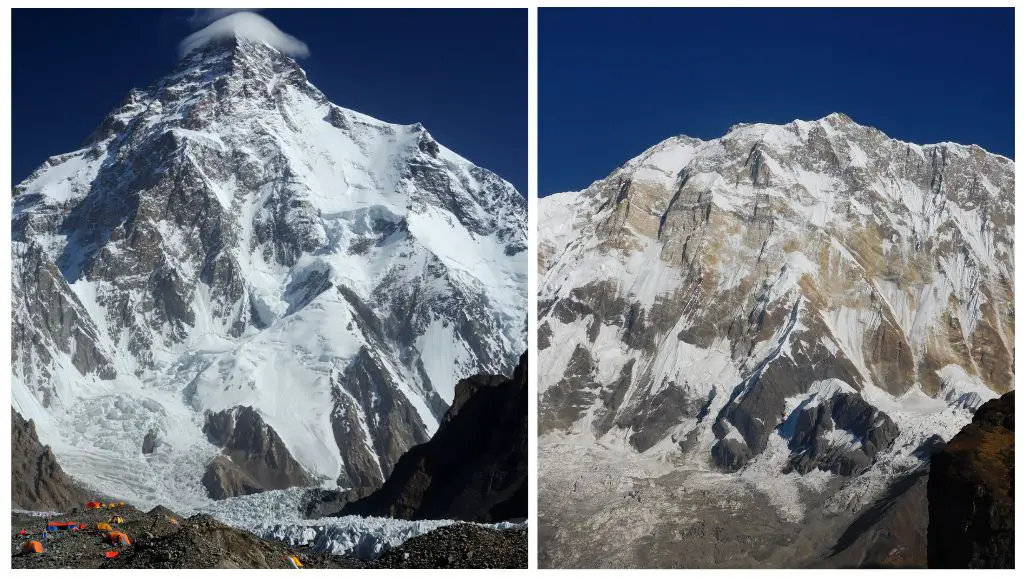
Annapurna and Mount K2 are two of the most dangerous mountains in the world. When it comes to climbing mountains, safety issues prevail globally as the peaks feature treacherous ridges, cliffs, and sloppy landscapes that threaten human life. Comparing the difficulty level of peaks over 8000 meters, Annapurna and K2 tops the list. Let’s see where they are located and what challenges they feature here:
Location and Elevation of Annapurna and K2

Annapurna is located in the Gandaki Province of Nepal. It is the tenth-highest peak in the world, with an elevation of 8,091 meters (26,545 ft) above sea level. It lies in the Annapurna Mountain Range of Mid-Western Nepal and borders Myagdi and Kaski districts.
Annapurna was named after the Hindu Goddess of Food and Nourishment, Annapurna. According to the Hindu myths, Goddess Annapurna resides on this mountain. In Sanskrit, ‘Anna’ means food, and ‘Purna’ means fulfilled. Hence, the etymological meaning of Annapurna is everlasting food. This theory is proved as the mountain is the source of a large volume of water downstream that flows to the neighboring districts. It has helped in agriculture and the lifestyle of the people around the region.
Annapurna is situated next to Tilicho Peak (7134 meters), Nilgiri North (7061 meters), Gangapurna (7455 meters), Annapurna III (7555 meters), and Annapurna II (7937 meters). The entire Annapurna Mountain Range is located within the protected area of the Annapurna Conservation Area. It is a UNESCO World Heritage Site established in 1992. It has an area of 7,629 square kilometers (2,946 square miles) and is the first and largest conservation area in Nepal.
Mount K2, on the other hand, is located in the Karakoram range. It is partially located in the Gilgit-Baltistan region of Pakistan-administered Kashmir. Similarly, it is partially located in the China-administered Trans-Karakoram Tract in the Taxkorgan Tajik Autonomous Country of Xingjiang. It is the second-highest peak in the world, with an elevation of 8,611 meters (28,251 feet) above sea level.
Mount K2 is a challenging mountain – the most dangerous peak to summit. It is also widely acknowledged for its nickname, ‘Savage Mountain.’ George Bell, the crew of the 1953 American expedition, coined the name ‘Savage Mountain,’ citing that ‘Mount K2 is a savage mountain that tries to kill you.’ It is stated that every climber dies out of four while climbing Mount K2.
Mount K2 was named during the Great Trigonometrical Survey of British India, led by Thomas Montgomerie. During the survey, Montgomerie found two of the most prominent peaks in the Karakoram range and labeled them K1 and K2. ‘K’ here stands for Karakoram.
Climbing History and Challenges
Annapurna:
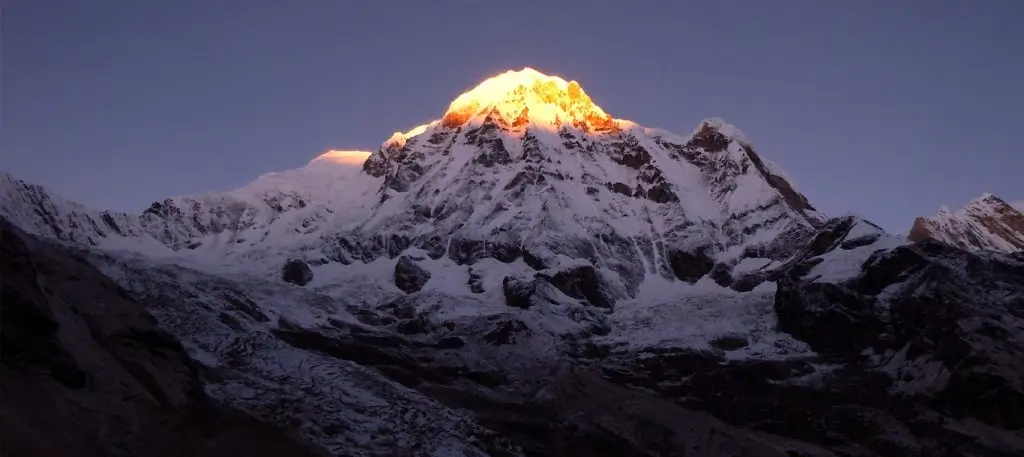
Mount Annapurna was first climbed in 1950, and it was the first peak over 8000 meters which was climbed successfully. A French expedition led by Maurice Herzog and Louis Lachenal successfully scaled Annapurna in 1950 and set the record. Since then, hundreds of mountaineers have reached this treacherous peak. As per the report of 2022, 365 climbers have successfully climbed Annapurna.
This peak is one of the most dangerous and is not called for no reason. The temperature, elevation, and weather patterns are very extreme that can not only cause obstacles in climbing but even pose a threat to the climber’s life. Here is the list of threats while climbing Annapurna:
- Freezing temperatures below -15 Degrees Celsius
- Steep and Slippery Ridges and Cliffs
- Extreme Weather Condition
- Altitude Sickness
- Avalanches
Mount K2:
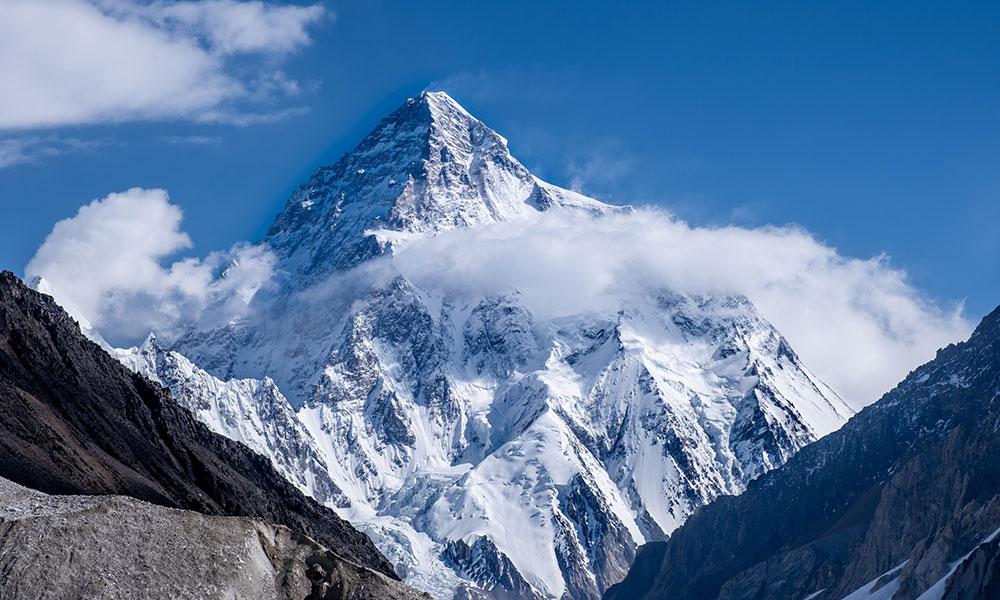
Mount K2 was first climbed by Lino Lacedelli and Achille Compagnoni, two professional Italian climbers, on 31 July 1954. Ardito Desio led the expedition via the Abruzzi Spur, making the record-keeping ascend to the top of Mount K2.
When it comes to the exploration of K2, the Great Trigonometrical Survey of British India, led by Thomas Montgomerie, first surveyed the mountain in 1856. During the survey, they explored the peaks from Karakoram Mountain Range and named them K1, K3, K4, and K5. These peaks were later renamed Masherbrum, Gasherbrum IV, Gasherbrum II, and Gasherbrum I.
Long before the successful climb, Mount K2 saw the climbing attempts from Oscar Eckenstein, Aleister Crowley, Jules Jacot-Guillarmod, Heinrich Pfannl, Victor Wessely, and Guy Knowles via the Northeast Ridge in 1902. However, they were not successful in reaching the top of the mountain. Reports cite that it took more than 14 days to reach the base camp. The expedition team successfully reached 6,525 meters (21,407 ft) above sea level; however, they returned with a failed attempt.
Similarly, in 1909, Prince Luigi Amedeo, Duke of the Abruzzi, attempted to climb K2. They successfully reached 6,250 meters (20,510 ft) on the South East Spur; however, the attempt went in vain. It was after the same attempt that South East Spur was named Abruzzi Spur or Abruzzi Ridge. Later, other attempts from the First American Karakoram expedition team in 1938, the 1939 American expedition led by Fritz Wiessner, and the 1953 American expedition failed until Ardito Desio came forward with a lead and made history in mountaineering.
Climbing Routes Comparison
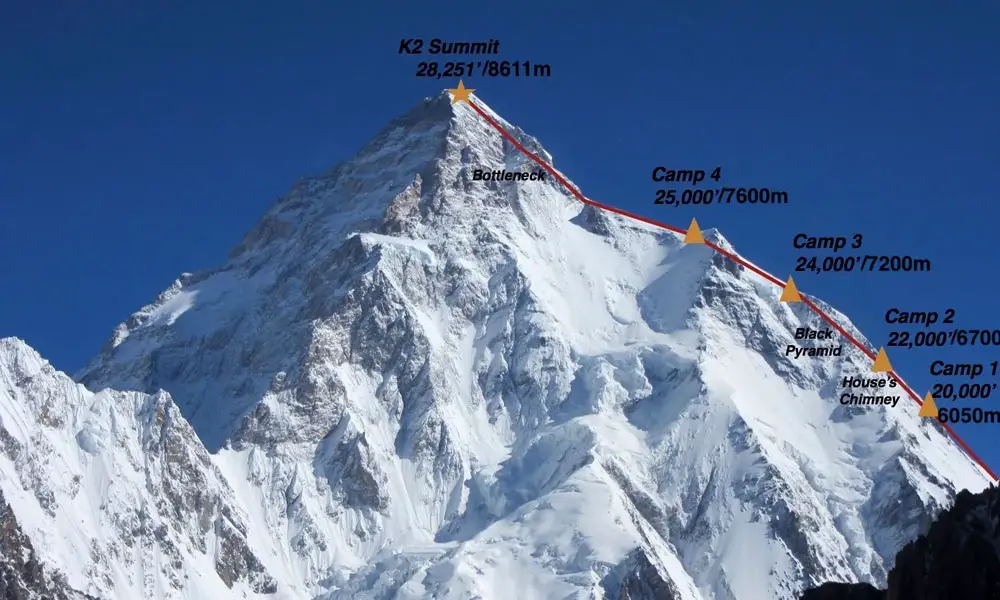
Annapurna has twelve different routes to reach the top of it. However, out of numerous routes, only NorthWest Face is considered the safest one since it comes with less difficulty level compared to other ones. It is the most preferred route to climb Mount Annapurna.
On the other hand, the most difficult and scariest route to Annapurna is the South Face. This route features large ice sheets and regions prone to avalanches. Similarly, the large crevasses make the climb more technical and difficult.
Mount K2, the most dangerous peak in the world, has nine different routes to reach its top. They are:
- Česen
- Northeast Ridge
- North Ridge
- South Face (Central Rib)
- South-southwest Pillar (Magic Line)
- Northwest Face
- Northwest Ridge
- West Face with the Abruzzi Spur
- East Face
East Face is the most dangerous route in K2 since this route features the instability of the snow and thick ice formation. Similarly, the weather patterns and high altitude comes as one of the prominent factors that pose threats to climbing. There are no easiest routes in Mount K2. However, the Abruzzi Route is considered the easiest route compared to other routes. This route is considered by 75% of total climbers who attempt Mount K2.
Cost of Climbing Annapurna vs. K2
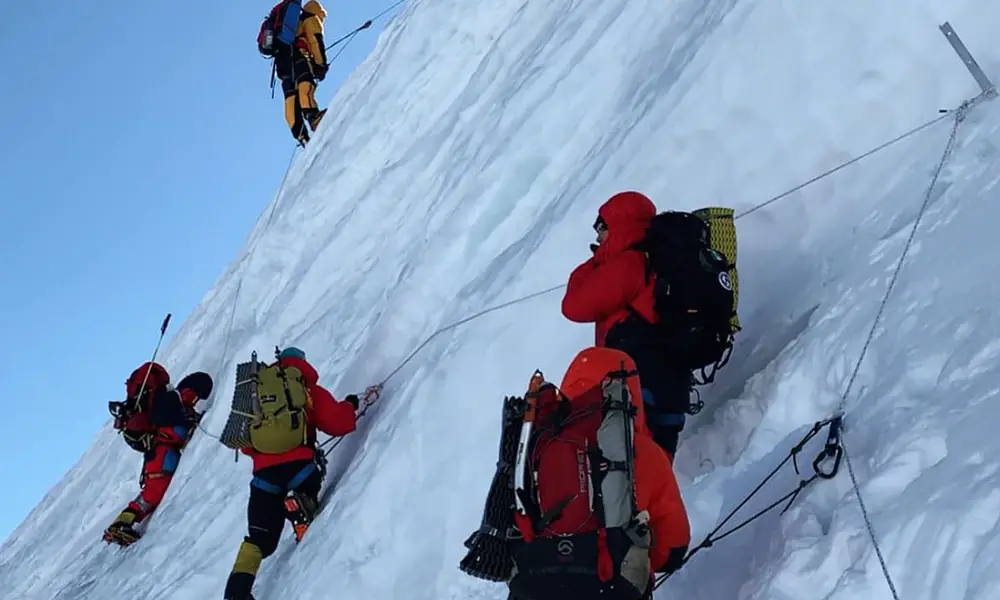
The average cost of climbing Mount Annapurna in Nepal is USD 12500 per person. At the same time, mountaineers must allocate around USD 15,000 to USD 39,000 to climb Mount K2 in Pakistan.
Generally, the itinerary of the Annapurna Expedition consists of one and a half to two months. The journey starts in Pokhara, a beautiful city in Kaski District, Mid-Western Nepal. From there, mountaineers hike to Annapurna Base Camp after traversing through several locations, such as Tatopani, Lete, Jungle Camp, Miristi Khola, Machhapuchhre Base Camp, and others. It is the same trail used to return to Pokhara after successfully climbing Annapurna.
Similarly, Mount K2 requires at least 25 to 30 days or one month to complete the climb successfully. The journey to the top of K2 begins in Islamabad, the capital of Pakistan. After taking a flight or a drive to Skardu/Chillas, the trail follows the major landmarks and places like Askole, Paiyu, Base Camp of Trango Tower and the Sarpo Lago pass, Khuburtze, Urdukas, Goro II, Concordia, and others.
See also:
- Norwegian Woman to Conquer All 14 Highest Peaks
- How Hard Is It To Climb Kilimanjaro?
- Easiest 8000 Meter Peak To Climb in Nepal
3. Ukrainians opening a new route through SE ride of the Annapurna III (7555 m), Autumn, 2021. Photo ©: Nikita Balabanov. pic.twitter.com/hXQjziyVAH
— Everest Today (@EverestToday) December 13, 2021
Frequently Asked Questions
Which mountain is more difficult to climb, Annapurna or K2?
Mount K2 is regarded as the most difficult mountain to climb in the world. The fatality rate is higher and features the most dangerous ridges, cliffs, and steeper slopes. And the requirements for technical climbing skills are high. Annapurna, on the other hand, is less challenging compared to Mount K2. But it is also one of the most difficult mountains to climb.
How many successful ascents have been made on Annapurna and K2?
Concerning the successful ascents to Mount Annapurna, around 365 mountaineers have reached to its top. Similarly, around 377 climbers have successfully climbed Mount K2 in Pakistan.
What is the best time to climb Annapurna?
Spring (March to May) and Autumn (September to November) are the best times to climb Annapurna. These months come with stable weather, moderate temperatures, clear skies, and less challenges regarding the route and trails.
What is the best time to climb Mount K2?
The best time to climb Mount K2 is between July and August. The trekking and climbing seasons around the Karakoram Mountain range are between mid-June to mid-September. But trekkers are not recommended to climb K2 during early June since the region features a wide range of snow.
What are the main risks associated with climbing Annapurna and K2?
Annapurna and K2 are the most dangerous peaks in the world, with both exceeding the elevation of 800 meters. Some risks and dangers associated with climbing Annapurna and K2 are altitude-related illnesses, including high-altitude pulmonary edema (HAPE) and cerebral edema (HACE). Similarly, low temperatures, avalanches, rockfalls, and treacherous landscapes contribute to dangerous climbs.
Can climbers attempt Annapurna or K2 as their first high-altitude climb?
No, Annapurna and K2 even pose numerous threats and dangers to professional climbers. And when it comes to beginner climbers, these two are the main peaks to be excluded from your list. Until and unless climbers are professional and affluent with technical climbing skills, they are highly discouraged from climbing Annapurna and K2.
Is it possible to climb Annapurna and K2 without supplemental oxygen?
It is not recommended to climb Annapurna and K2 without oxygen supplements since the air is low and the oxygen level is depleted. This might even take your life. But there are some records of mountaineers who have successfully climbed this mountain without oxygen. Nirmal Purja (NIMS DAI) is recognized for climbing K2 without oxygen supplements. Similarly, Ali Sadpara, the son of the late Pakistani mountaineer Muhammad Ali Sadpara, climbed Annapurna without oxygen.

